Is faster always better, or does skill still matter in embroidery digitizing? With AI changing the way we create embroidery designs, many wonder if manual digitizing is becoming outdated. AI vs manual embroidery digitizing is a hot debate—one focuses on speed and automation, while the other offers precision and creativity.
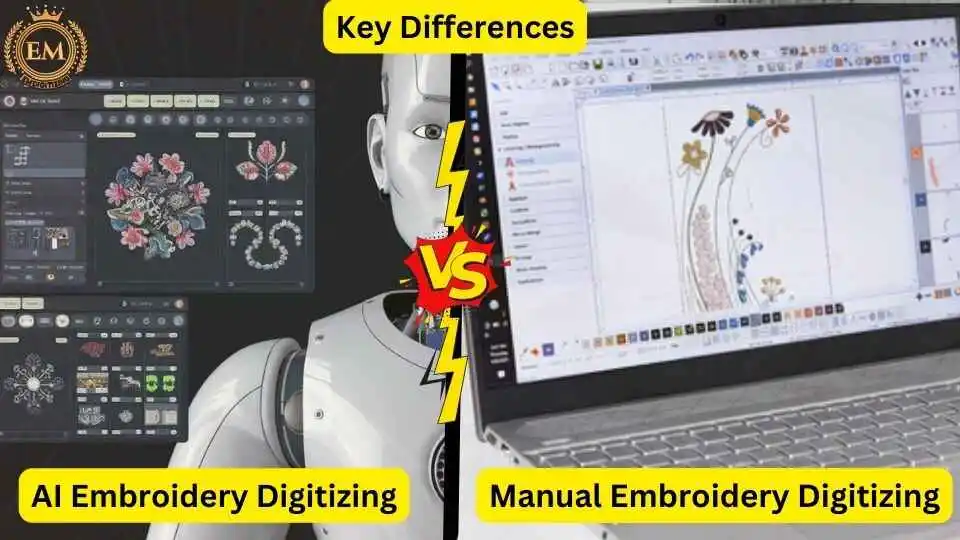
AI-powered digitizing helps complete designs in minutes, but can it match the fine detail of handcrafted digitizing? In this guide, we’ll compare both methods, discuss their pros and cons, and help you decide which one is the best fit for your embroidery projects. Let’s explore!
AI vs Manual Embroidery Digitizing: Key Differences
What is AI Embroidery Digitizing?
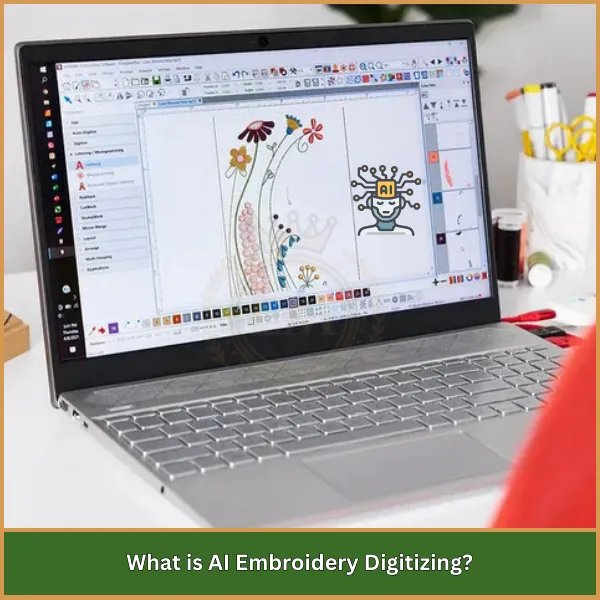
It is a modern technique that uses artificial intelligence (AI) to automatically transform artwork into a digital embroidery file.
The AI software analyzes the design, identifies shapes and patterns, and generates stitch instructions for the embroidery machine.
This method is known for its speed and automation, making it a popular choice for businesses with high-volume or simple design needs.
Benefits:
- Fast: AI can digitize a design in minutes, making it perfect for businesses with tight deadlines.
- Cost-Effective: Once the software is set up, the cost per design is much lower compared to manual digitizing.
- Consistent Results: AI produces uniform results, which is great for businesses that need to digitize many similar designs.
- Scalable: AI is ideal for large orders because it can handle hundreds or thousands of designs quickly.
Drawbacks:
- Limited Creativity: AI struggles with highly artistic or complex designs that require a human touch.
- Dependent on Input Quality: If the original design is low quality, the AI may not produce good results.
- Initial Setup Costs: While AI saves money in the long run, the software and training can be expensive to set up initially.
What is Manual Embroidery Digitizing?
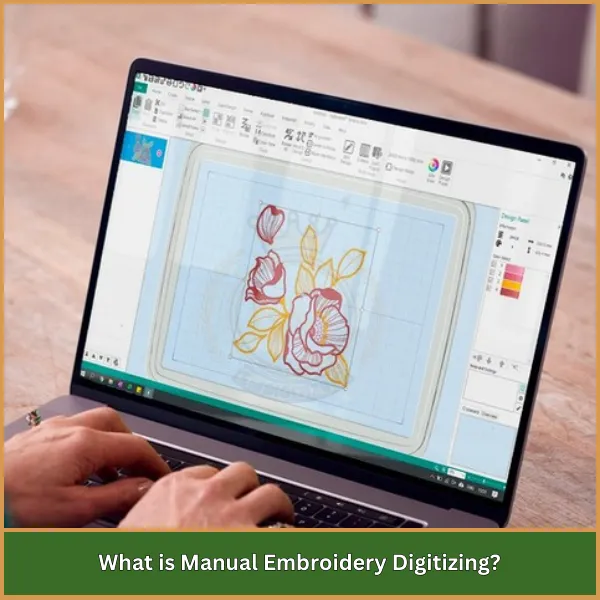
It is a traditional process where a skilled human digitizer manually converts artwork into a digital embroidery file using specialized software.
The digitizer carefully plans each stitch, adjusts settings like stitch type and density, and ensures the design is optimized for embroidery machines.
This method is valued for its precision and ability to handle complex or custom designs.
Benefits:
- High Precision: A skilled digitizer can create incredibly detailed and accurate designs. This is especially important for complex or artistic designs.
- Customization: Manual digitizing allows for complete control over every stitch, making it perfect for unique or custom projects.
- Quality: Because a human is in charge, the final product often looks more polished and professional.
Drawbacks:
- Time-Consuming: Manual digitizing can take hours or even days, depending on the complexity of the design.
- Expensive: Hiring skilled digitizers costs money, and the process is labor-intensive, which drives up the price.
- Not Ideal for Large Orders: Manual digitizing is slower, so it’s not the best choice for businesses that need to produce hundreds or thousands of embroidered items quickly.
Key Differences Between AI vs Manual Embroidery Digitizing
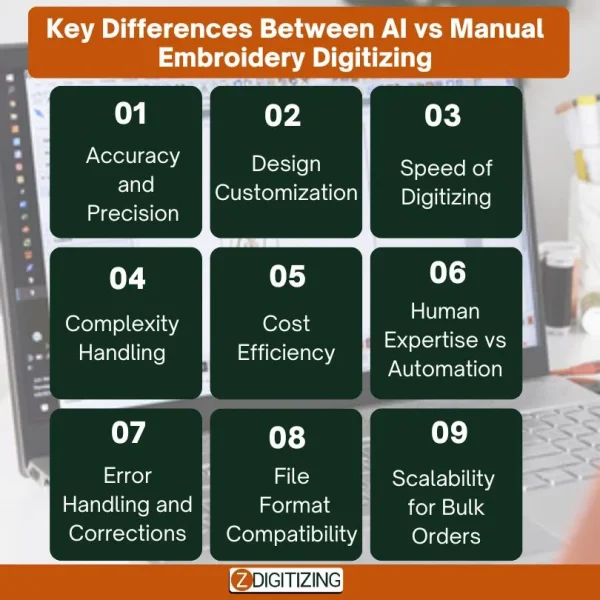
While both methods achieve the same goal, they differ significantly in terms of some factors.
Understanding these key differences can help you choose the right approach for your embroidery needs.
Here are the key differences between manual vs AI embroidery digitizing:
- Accuracy and Precision
- Design Customization
- Speed of Digitizing
- Complexity Handling
- Cost Efficiency
- Human Expertise vs. Automation
- Error Handling and Corrections
- File Format Compatibility
- Scalability for Bulk Orders
1. Accuracy and Precision
AI embroidery digitizing is very precise because it follows programmed instructions to convert images into stitch patterns. However, it may struggle with tiny details, complex textures, or unique artistic elements.
Manual digitizing, done by an expert, ensures high accuracy because a person carefully adjusts each stitch to match the design perfectly. This makes manual digitizing better for detailed and high-quality embroidery.
2. Design Customization
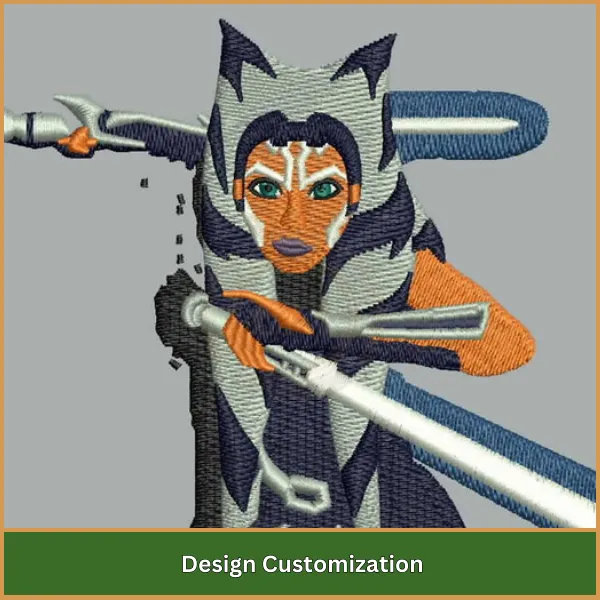
AI works with pre-set patterns and might not allow much flexibility in design changes.
It follows an automated process, so adjustments for specific fabric types, stitch styles, or creative elements can be limited.
On the other hand, digitizing manually gives complete control to the digitizer, who can make changes based on the client’s needs, fabric type, and embroidery style.
This makes manual digitizing better for unique and customized designs.
3. Speed of Digitizing
AI is much faster compared to manual digitizing. It can convert a design into embroidery file within minutes, making it a great option for bulk orders or quick projects.
Manual work, however, takes more time because a skilled person carefully places each stitch, ensuring a higher-quality result. While it is slower, manual digitizing guarantees that the final embroidery will look more professional and refined.
4. Complexity Handling
Auto digitizing works well for simple and basic designs but struggles with more complex patterns that require different stitch types, shading, or fine details. It might not properly adjust stitch density or angles for intricate designs.
Manual embroidery digitizing is better at handling complex designs because the digitizer can make necessary adjustments to improve the final embroidery result, ensuring the best quality, even for highly detailed patterns.
5. Cost Efficiency
AI digitizing is generally cheaper because it does not require a professional to manually adjust the design. It is a budget-friendly option for those who need quick and simple embroidery files.
Digitizing manually, on the other hand, is more expensive because it requires skill, time, and expertise. However, the investment is worth it for businesses or individuals looking for high-quality, professional embroidery results.
6. Human Expertise vs. Automation
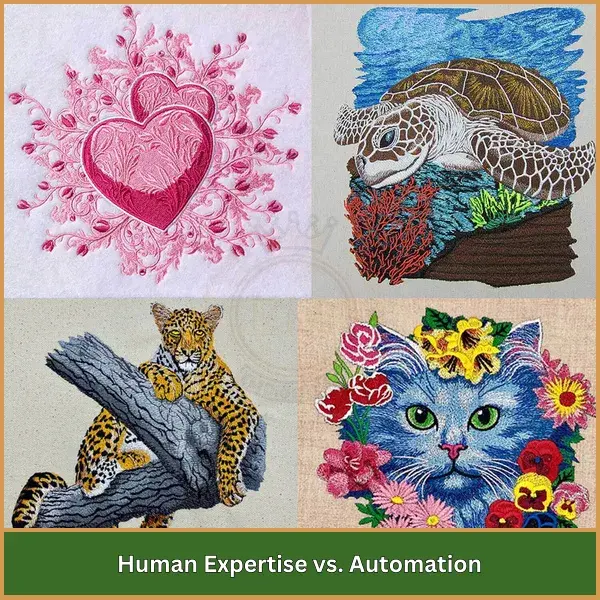
AI works based on programmed instructions and does not have the ability to make creative or experience-based decisions.
It follows a set process and cannot think like a human.
Manual embroidery digitizing benefits from human expertise, where an experienced digitizer can use their knowledge to adjust the stitch patterns, ensuring the best outcome.
This makes manual digitizing a better choice for embroidery projects that require creativity and precision.
7. Error Handling and Corrections
Automated digitizing sometimes makes mistakes, such as incorrect stitch angles, poor stitch density, or misalignment. These errors can affect the quality of the final embroidery.
Custom digitizing reduces such mistakes because the digitizer can identify and fix potential issues before completing the design. This means manual digitizing provides a more reliable and professional outcome.
8. File Format Compatibility
AI digitizing software can generate standard embroidery file formats, but some specific formats may not be supported. This can cause problems when using different embroidery machines.
Digitizing manually ensures that the design is created in the correct file format for the intended machine, preventing compatibility issues and ensuring smooth embroidery production.
9. Scalability for Bulk Orders
Auto digitizing is highly scalable because it can quickly process multiple designs at once. This makes it ideal for businesses that need large quantities of embroidery files in a short time.
Manual digitizing, while offering better quality, takes more time and effort. It is best suited for custom, high-quality embroidery rather than mass production.
Which Method ( AI vs Manual Embroidery Digitizing ) Should You Choose?
The best method for your business depends on your specific needs. Here are some questions to help you decide:
- What is Your Production Volume?
- If you need to produce hundreds or thousands of items quickly, go with AI.
- If you’re working on small batches or custom orders, manual digitizing is better.
- How Complex Are Your Designs?
- For intricate or artistic designs, choose manual digitizing.
- For simple logos or patterns, AI is a great option.
- What is Your Budget?
- If you can afford skilled labor and want top-quality results, manual digitizing is worth the investment.
- If you’re looking to save money and need faster turnarounds, AI is the way to go.
- What is Your Turnaround Time?
- If you’re in a hurry, AI can digitize designs in minutes.
- If you have more time and want the best quality, manual digitizing is the better choice.
Conclusion
When you compare AI vs manual embroidery digitizing, it’s clear that quality is key. While AI may be fast, it often misses the careful touch needed for truly perfect embroidery.
At EMdigitizing, we focus on manual digitizing done by skilled professionals who pay attention to every detail. We take pride in creating embroidery files that are flawless and ready for use, whether your design is simple or very detailed.
We offer flat-rate pricing with no hidden costs, a super-fast turnaround, and secure 3D payment options to keep your experience safe and easy. Plus, new customers enjoy a special 50% discount. Order Now and see the difference quality makes!
FAQs
By automating the digitizing process, AI reduces the time and effort needed to prepare embroidery files. Designers can work on more projects without spending hours on manual adjustments.
AI digitizing relies on software to automatically convert designs into stitch files, making it quick and efficient. Manual digitizing, on the other hand, is done by an expert who carefully places stitches, ensuring greater accuracy and customization.
AI allows businesses to handle digitizing in-house instead of hiring professional digitizers, cutting down labor costs. This makes embroidery services more affordable while maintaining productivity.
AI ensures every stitch is placed with precision, reducing errors and inconsistencies. This is especially useful for bulk production where uniform quality is needed.
AI struggles with highly detailed designs, fabric variations, and stitch density adjustments. Many AI-generated files still need manual fine-tuning for the best results.
AI can assist in digitizing, but it lacks the artistic intuition of a human designer. Creativity, intricate detailing, and unique customizations still require human expertise.
Faster digitizing means businesses can complete orders quickly, leading to better customer satisfaction. AI also helps maintain quality consistency, reducing the need for revisions.
AI works well for basic and repetitive designs but may not handle complex, artistic embroidery with the same level of detail as manual digitizing.
New AI tools now offer smart stitch placement, automatic design adjustments, and real-time previews, making embroidery digitizing more accessible and efficient.
AI can process a variety of designs, but intricate patterns with overlapping stitches or fine details often need human intervention for perfection.
